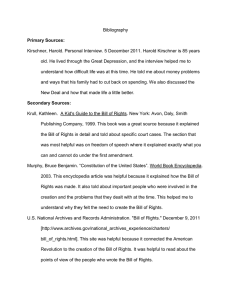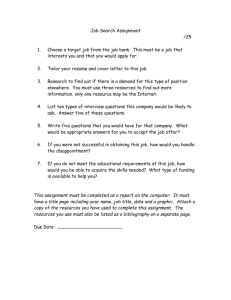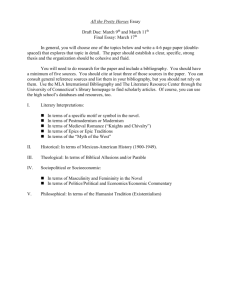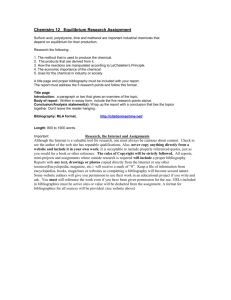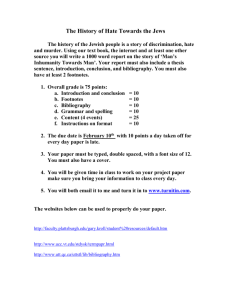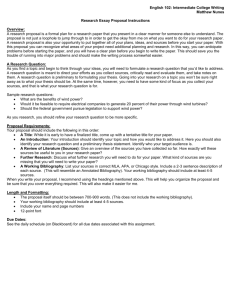History Fair Research - Hewlett
advertisement
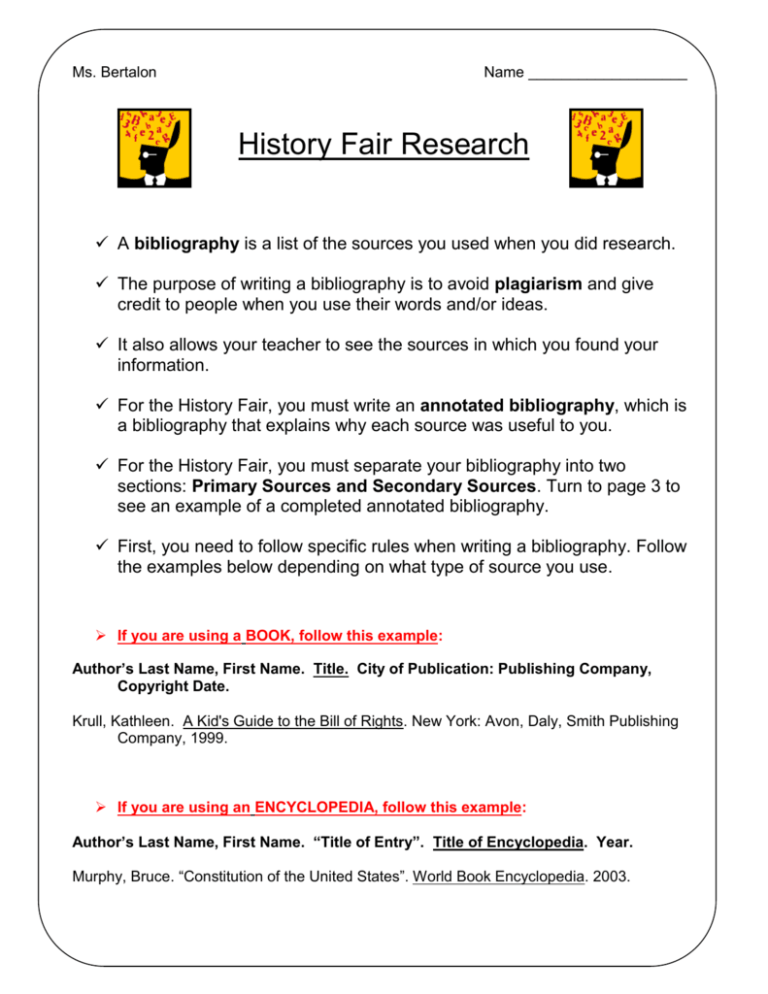
Ms. Bertalon Name ___________________ History Fair Research A bibliography is a list of the sources you used when you did research. The purpose of writing a bibliography is to avoid plagiarism and give credit to people when you use their words and/or ideas. It also allows your teacher to see the sources in which you found your information. For the History Fair, you must write an annotated bibliography, which is a bibliography that explains why each source was useful to you. For the History Fair, you must separate your bibliography into two sections: Primary Sources and Secondary Sources. Turn to page 3 to see an example of a completed annotated bibliography. First, you need to follow specific rules when writing a bibliography. Follow the examples below depending on what type of source you use. If you are using a BOOK, follow this example: Author’s Last Name, First Name. Title. City of Publication: Publishing Company, Copyright Date. Krull, Kathleen. A Kid's Guide to the Bill of Rights. New York: Avon, Daly, Smith Publishing Company, 1999. If you are using an ENCYCLOPEDIA, follow this example: Author’s Last Name, First Name. “Title of Entry”. Title of Encyclopedia. Year. Murphy, Bruce. “Constitution of the United States”. World Book Encyclopedia. 2003. If you are using a WEBSITE, follow this example: Author, company, or organization that wrote the website. "Title of Web Page." Date you looked at it [Website Address]. U.S. National Archives and Records Administration. "Bill of Rights." December 20, 2007 [http://www.archives.gov/national_archives_experience/charters/ bill_of_rights.html]. If you are using an INTERVIEW, follow this example: Name of person interviewed. Kind of interview (personal interview, telephone interview, or E-mail interview). Date of interview. Kirschner, Harold. Personal Interview. 20 December 2007. Directions for writing an ANNOTATED BIBLIOGRAPHY: ______ Open up a new, blank page in Microsoft Word. ______ Type the word Bibliography at the top of the page and center it. ______ Make two sections: Primary Sources and Secondary Sources ______ Follow the examples and type in the information that is required for the type of source you are using. ______ Directly after the source information, type in your annotation (your explanation of what specifically about this source helped you and what information you got from it) ______ Skip a space between each source. ______ Put the sources that you used in alphabetical order by the author’s last name (or the company name). If there is no author, alphabetize it by the title. Do not number the list of sources. ______ The first line of each source should start at the margin, and every line after it should be indented. The trick to make this work is the hold down to Control key (Ctrl) and the Tab key at the same time. ______ + Look at the sample bibliography on the next page. Make sure your bibliography looks like this. Bibliography Primary Sources: Kirschner, Harold. Personal Interview. 5 December 2009. Harold Kirschner is my 85 year old great-uncle. He lived through the Great Depression, and the interview helped me to understand how difficult life was at this time. He told me about money problems and ways that his family had to cut back on spending. We also discussed the New Deal and how that made life a little better. Secondary Sources: Krull, Kathleen. A Kid's Guide to the Bill of Rights. New York: Avon, Daly, Smith Publishing Company, 1999. This book was a great source because it explained the Bill of Rights in detail and told about specific court cases. The section that was most helpful was on freedom of speech where it explained exactly what you can and cannot do under the first amendment. Murphy, Bruce Benjamin. “Constitution of the United States”. World Book Encyclopedia. 2003. This encyclopedia article was helpful because it explained how the Bill of Rights was made. It also told about important people who were involved in the creation and the problems that they dealt with at the time. This helped me to understand why they felt the need to create the Bill of Rights. U.S. National Archives and Records Administration. "Bill of Rights." December 9, 2009 [http://www.archives.gov/national_archives_experience/charters/ bill_of_rights.html]. This site was helpful because it connected the American Revolution to the creation of the Bill of Rights. It was helpful to read about the points of view of the people who wrote the Bill of Rights.
